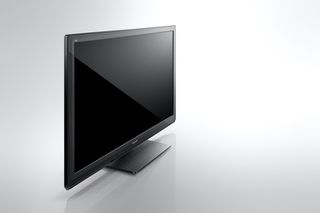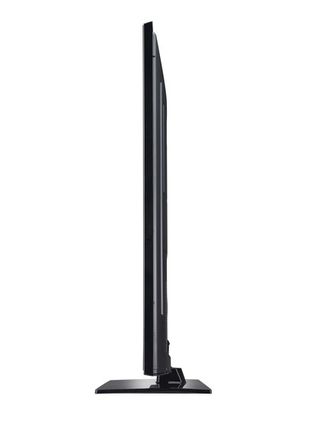Plasma TV: the comeback
Is the original flatscreen TV tech undergoing a revival?

CHEAPER 3D: As well as its high-end 3D plasmas, Panasonic has this year introduced the budget ST30 Series
We asked Fabrice Estornel, product manager at Panasonic UK's TV Group Visual Marketing, whether plasma is making a comeback. "It never went away," he told us, "but obviously the emergence of 3D was a key driving force last year, thanks to plasma picture quality superiority, plus the increase in demand for larger screen size supported sales where, again, plasma is the best suited technology to produce big quality screens, such as a 50-inch."
Plasma advantages
Estornel lists plasma's short response time, natural picture, accurate colours, best black levels and screen uniformity as reasons for its popularity - particularly in home cinemas. "People passionate about home cinema tend to buy plasma TVs; our VT20 last year was a massive hit in this market," he says.
"The absence of backlight bleeding on Plasma makes the technology the best for such conditions. Estornel also points out that plasma was a lot more power hungry than LCD in the past, but that Panasonic has slashed power consumption by 50 per cent in the last few years.
"Our aim in the near future is to produce plasma TVs that are more power efficient than LED TV, and I do believe that this can be achieved very soon," he says.
The third pillar of plasma, LG, is also expanding is ranges. Five distinct Series of plasmas - the PW450T, PZ250T, PZ550T, PZ570T and PZ950T - are, remarkably, all 3D Ready.
Get daily insight, inspiration and deals in your inbox
Get the hottest deals available in your inbox plus news, reviews, opinion, analysis and more from the TechRadar team.

3D READY: LG's PW450T offers the Full HD-capable Active 3D tech, but just an HD Ready resolution
Despite a good year for plasma and the technology's perceived advantages for the 3D future, there's a big challenge ahead in the flatscreen TV market.
After being conspicuous by its absence on the first throng on 3D TVs - save for a sole LG TV, the 47LD950 - polarized, or passive, 3D technology is about to sweep the nation.
Promoted by LG alongside its Active 3D sets, Cinema 3D, as it's known, is an effort to make the format a lot more affordable. Screen sizes even dip to 32-inches.
"Frame sequential (so active glasses) 3D requires no change at all to the panel - all the selection is done in the glasses," Paul Gray, DisplaySearch's Director of Europe TV Market Research, told TechRadar.
"The passive ones create the separate left and right views by a striped polarizing film bonded to the screen - odd rows are left, even are right. I guess that this could be done for plasma, but nobody has tried it. Plasma seems to work better than LCD for active shutter, due to the impulse nature of plasma displays."
We at TechRadar take no stance on the 'which is better' debate between LCD and plasma, but rather the opposite; they're both brilliant, and to see one or the other disappear would be a sad day indeed.
But having seen some of the latest 3D plasmas, the original flat TV tech looks to have a bright future indeed.
------------------------------------------------------------------------------------------------------
Liked this? Then check out Best TV 2011: choose the best TV to buy
Sign up for TechRadar's free Weird Week in Tech newsletter
Get the oddest tech stories of the week, plus the most popular news and reviews delivered straight to your inbox. Sign up at http://www.techradar.com/register
Jamie is a freelance tech, travel and space journalist based in the UK. He’s been writing regularly for Techradar since it was launched in 2008 and also writes regularly for Forbes, The Telegraph, the South China Morning Post, Sky & Telescope and the Sky At Night magazine as well as other Future titles T3, Digital Camera World, All About Space and Space.com. He also edits two of his own websites, TravGear.com and WhenIsTheNextEclipse.com that reflect his obsession with travel gear and solar eclipse travel. He is the author of A Stargazing Program For Beginners (Springer, 2015),

